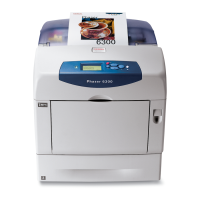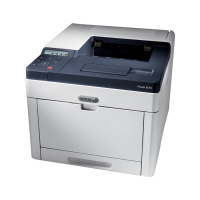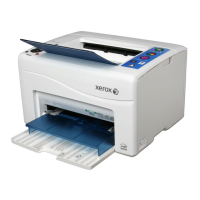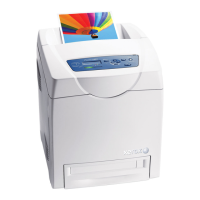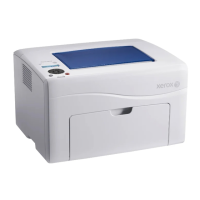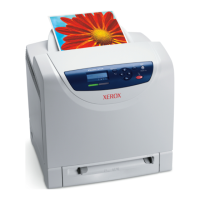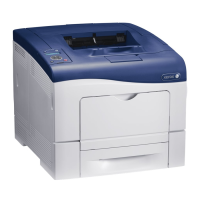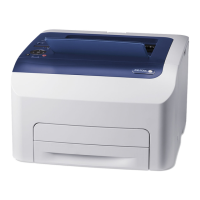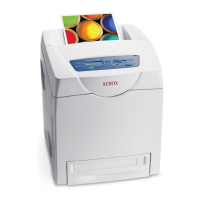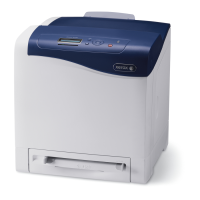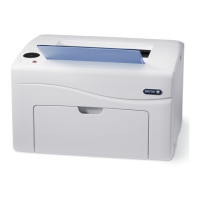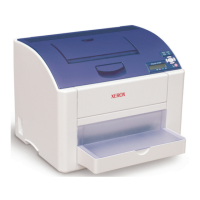5-2 Phaser 6300/6350/6360 Color Laser Printer Service Manual
Print-Quality Troubleshooting
Print-Quality Problems Overview
Print-quality defects can be attributed to printer components, consumables,
media, internal software, external software applications, and environmental
conditions. To successfully troubleshoot print-quality problems, eliminate as
many variables as possible. The first step is to generate prints using printable
pages embedded in the printer on laser paper from the supported media list.
Use paper from an fresh ream that is acclimated to room temperature and
humidity.
See “Media and Tray Specifications” on page 1-18 or the Paper Tips page for
media that has been tested and approved for use in Phaser 6300/6350/6360
printers. If the print-quality defect is still present when printing on approved
media from an unopened ream, then investigate software applications and
environmental conditions.
Print the Status or Configuration page to determine the temperature and
humidity under which the printer is operating. Compare this to the
“Environmental Specifications” on page 1-16. Temperature and humidity
extremes can adversely effect the xerographic and fusing characteristics of
the printer.
Phaser 6300/6350/6360 printers use separate Developer Assemblies to
develop a latent image for each color on the Imaging Unit where the colors are
combined to form the final image. In most cases, print-quality defects are the
result of one particular component in the print engine, See the Repeating
Defects chart under
“Defects Associated with Specific Printer Components”
on page 5-3 or print the Repeating Defects page from the Control Panel.
When a single component of the Imaging Unit is causing a print-quality defect,
replace the Imaging Unit.
When analyzing a print-quality defect, first determine if the defect occurs in all
colors or only one color and if it is repeating or random. Continuous defects in
the process direction, such as voids and lines, are the most difficult to
diagnose. Inspect the visible surfaces of all rollers for obvious defects. If no
defects are observed, replace the Imaging Unit, Developer Assembly, Transfer
Roller, and Fuser one at a time until the defect is eliminated.
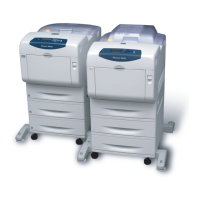
